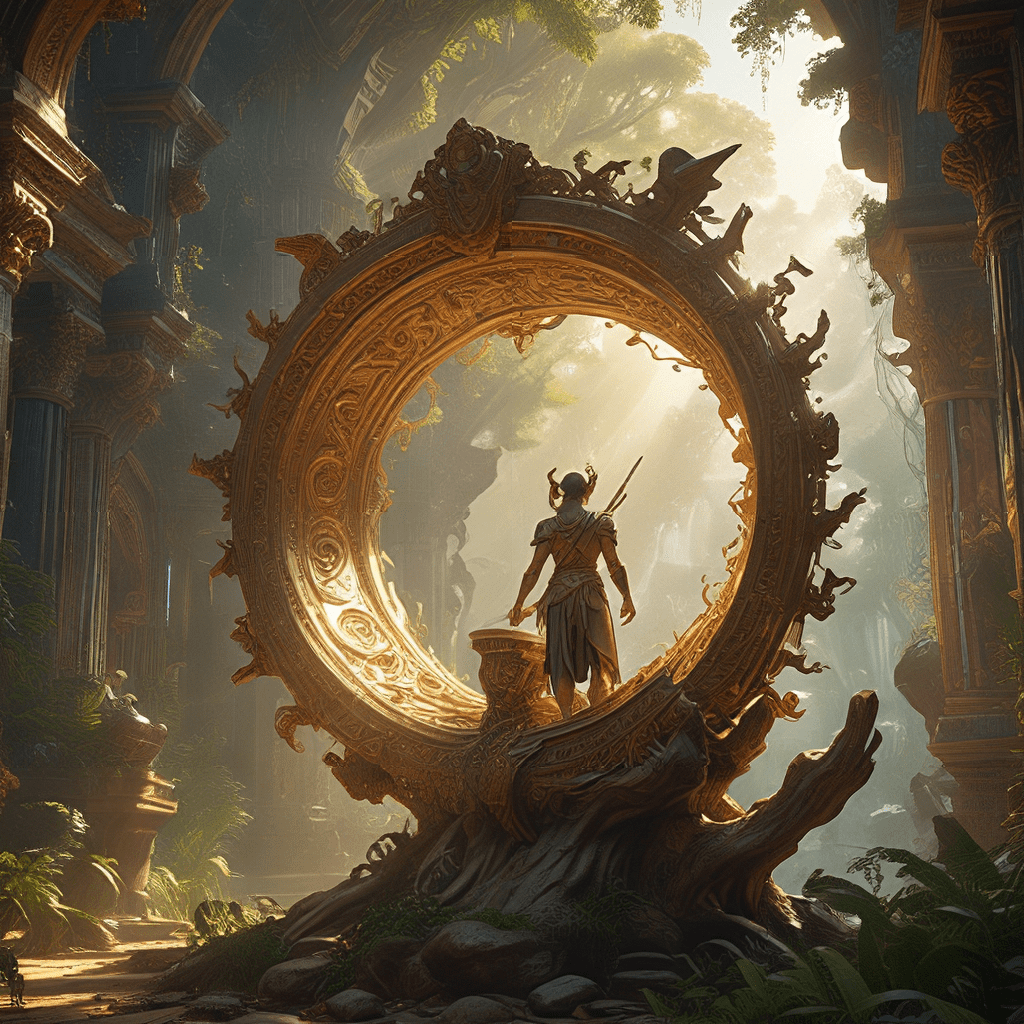The Mythological Worldview: Shaping Our Understanding of the World
1. Introduction: The Enduring Power of Myths
Myths are stories that have been passed down through generations, often weaving together elements of history, folklore, and spirituality. These narratives, while sometimes viewed as mere fables, offer a profound insight into the human experience. They provide a lens through which we can understand the origins of our world, the nature of humanity, and the complexities of our place within the universe. Studying mythology allows us to delve into the collective unconscious of humanity, exploring how cultures have interpreted their world and the forces that govern it. Understanding these ancient stories allows us to appreciate the enduring power of myth in shaping our understanding of ourselves and our place in the world.
2. Origins and Function of Myths
Myths emerged from a fundamental human need to understand the world around them. In the absence of scientific explanations, early humans sought to explain natural phenomena, such as the changing seasons, the power of storms, and the mysteries of birth and death. Myths served as a way to make sense of the unknown, providing answers to questions that science could not yet address. Beyond explanation, myths also served a crucial function in unifying communities. They provided a shared identity, a set of values, and a moral compass. By telling stories of heroes, gods, and monsters, myths reinforced social norms and expectations, ensuring the stability and cohesion of the group.
3. Key Features of Mythical Worldviews
Mythological worldviews are characterized by a profound reverence for the sacred and the supernatural. They often feature a belief in deities and other powerful beings that intervene in human affairs. These deities represent a wide range of concepts, from the forces of nature to abstract ideas like love, war, and destiny. Creation myths are central to many mythological systems, explaining the origins of the universe, humanity, and societal structures. These narratives often portray the world as an ordered system, created by divine beings, with a purpose and a destiny. Cosmogonic and cosmographic perspectives underpin many mythological worldviews. These perspectives present a detailed picture of how the universe is structured, often incorporating elements of astronomy, geography, and cosmology, reflecting the knowledge and beliefs of their time.
4. The Role of Gods and Goddesses
Gods and goddesses play a pivotal role in mythology, representing the forces of nature, human emotions, and societal values. Pantheons, a collection of deities, vary significantly across cultures, reflecting the specific beliefs and practices of each society. In Greek mythology, for example, Zeus, the king of the gods, embodies strength and power, while Athena represents wisdom and strategy. These deities are often depicted as having human-like emotions and motivations, engaging in conflicts, alliances, and romantic entanglements. The interplay between divine intervention and human agency is a recurring theme in mythology. Gods and goddesses often influence human events, shaping destinies and bestowing favor. However, humans are not always passive recipients of divine will, sometimes challenging or even defying the gods, highlighting the complexity of the relationship between the divine and the mortal.
5. Myth and Ritual
Myths and rituals are intricately intertwined, forming a powerful system of belief and practice. Rituals, often elaborate ceremonies and festivals, are designed to reenact mythical events, honoring the gods, and seeking their favor. These rituals serve to maintain social order, reinforcing the values and beliefs embedded within the myths. For example, the ancient Greek festival of the Panathenaia, held in honor of Athena, involved a procession, sacrifices, and competitions, all of which reinforced the city’s dedication to its patron goddess and the values she embodied.
6. Mythological Themes and Archetypes
Myths across different cultures often share common themes and motifs. These recurring elements, such as the hero’s journey, the battle between good and evil, or the cycle of life and death, reflect universal human experiences and concerns. Archetypes, recurring characters or situations, are another defining feature of mythology. The hero, the trickster, and the wise elder are examples of archetypes that appear in countless stories, representing universal human traits and motivations. These archetypes transcend cultural boundaries, suggesting a deeper layer of shared human experience that resonated across time and place.
7. The Influence of Myth on Literature and Art
Myths have served as a rich source of inspiration for literature, drama, music, and visual arts across the world. From the epic poems of Homer to the plays of Shakespeare and the paintings of Michelangelo, artists have drawn upon the imagery, themes, and characters of mythology to explore enduring human concerns. The impact of mythological themes and characters on Western and Eastern cultures is undeniable. Even in modern times, myths continue to be reinterpreted and reimagined, appearing in films, television shows, video games, and other forms of media. The enduring influence of mythology reflects the profound role it plays in shaping our understanding of the world and our place within it.




